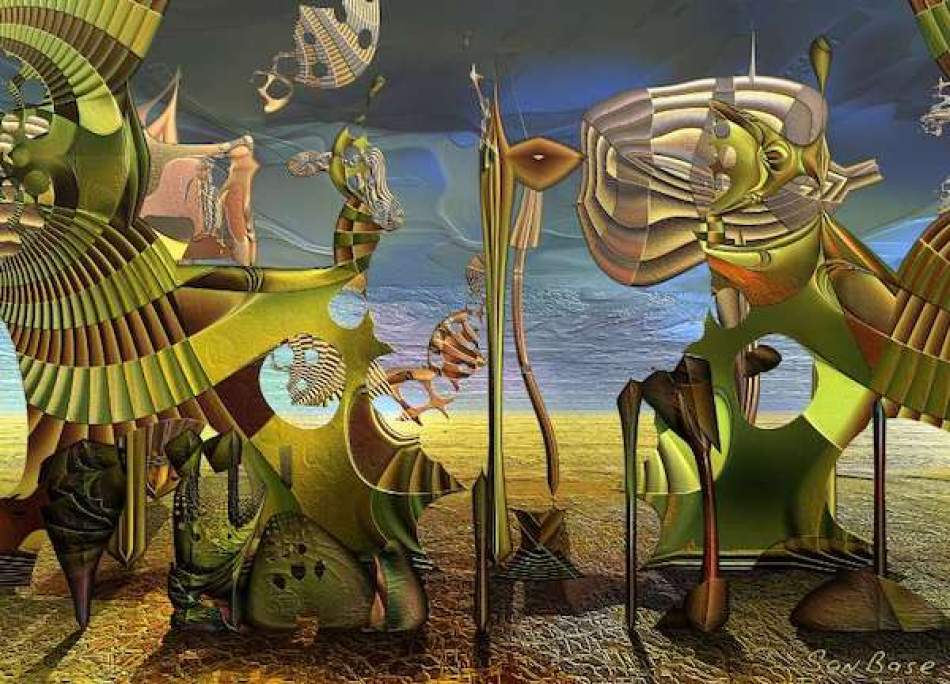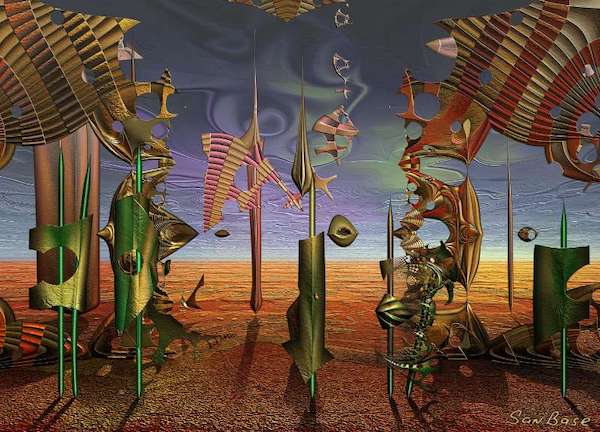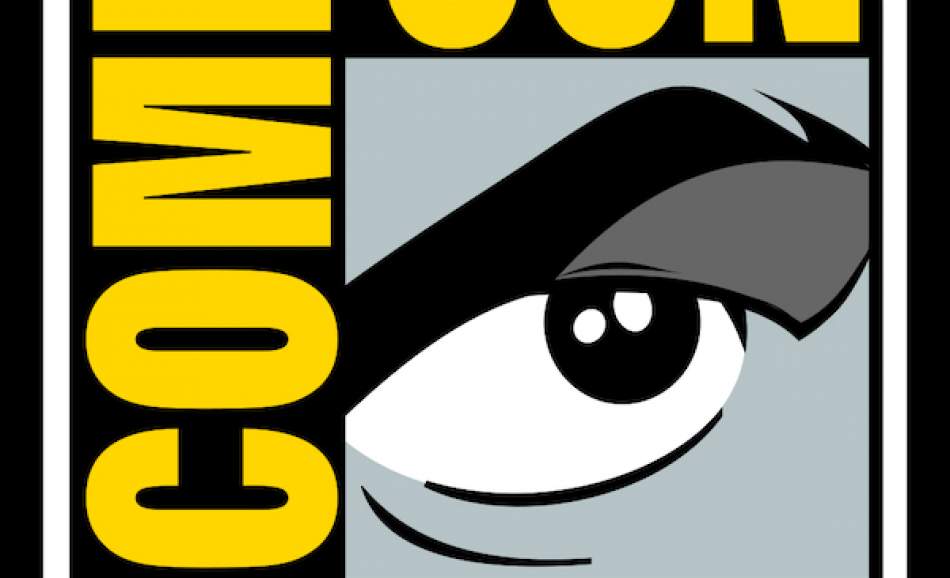The Digital Art, interview with artist San Base
Daily / Interview - 18 July 2019
San Base is an artist specializing in generative art

San Base is a contemporary Canadian artist specializing in generative art. The artwork is born from a software, which continuously re-elaborates an initial image. This re-elaboration is then hung on the wall, with an LCD screen.
Q. What’s your recent work in digital-video art?
A. If we are talking only about video art, my latest work (2015) was the 3D BluRay titled “Geography of the Universe”. It's difficult to classify the genre of this disc; it's best described as a journey through virtual worlds. The disc contains six episodes, each of which represents its own virtual world. In each world, the viewer gets to fly serenely through strange and beautiful (or terrible) spaces. I must say that these worlds exist objectively; they are as real as the world we see around us is real. They simply exist in the mathematical space and not in the physical space like our world. I believe that they were created by the Creator at the same time as the creation of the Universe. I just turn this abstract mathematical substance into visible and understandable images.
Look at the Gallery: Digital Art - San base
Q. How do you create a work?
A. I started as a traditional artist using paints and canvas. Then I decided to create dynamic pictures because the element of time is so critical for the world and our experiences within it. For this, I had to use a computer, because traditional materials do not give me the opportunity to do this. I have come a long way from starting with fairly simple abstract dynamic pictures to now creating ultra-realistic three-dimensional fractal worlds.
So instead of brushes and paints, I now sit at the computer keyboard. I want to note that there is no single program for creating all these dynamic pictures. Each picture is the product of a unique program; every time it needs to be written from scratch. Otherwise, instead of creating a new world you will simply get some mixture of already existing ones. So each dynamic picture is a program, and that program must be created uniquely for each picture. When a “skeleton” of the painting is ready, then begins a long process of fine-tuning the image by matching colors, and imposing restrictions on the parameters that influence the picture; when these things change, it must not turn into chaos. It can take weeks. When the dynamic picture is ready, it can live its life endlessly, creating countless variations of the basic plot. After that, you can record a video which can show few minutes from the life of the picture. But, as I said, the real dynamic picture is infinite.
Q. Do you think technology can help art?
A. Of course technology can help art. Why waste your time on what is not art? In the time of Michelangelo the artists were forced to make the paints themselves, from natural ingredients, now we can buy chemical paints in any art shop. This allows the artist to work more productively. The most disputes occur specifically around the use of computers for art. Many people, for some reason, are sure that computers and art are incompatible, because the computer does something by itself. This is a delusion. The computer is a completely dull piece of iron and silicon - it cannot do anything by itself. The apparent ease with which a computer displays images is only made possible by hundreds of hours of programmers' work. I want to remind you that all software developers are in fact people.
Consider a simple example: Don Quixote by Pablo Picasso - http://cubismsite.com/wp-content/uploads/2017/03/Don-Quixote-Pablo-Picasso-1.jpg (I very like this picture!).
Picasso in 1955 used ink and paper. Now imagine that he drew the same image using Photoshop: in this case would the picture be worse? The obvious answer is no. Let's go further: imagine that Picasso wrote a program that drew this image. Who is the author of the picture? Picasso or his computer? – It’s definitely Picasso. Has the picture become worse because the author used computer? Again, the answer is no. In addition, by writing a program, Picasso can easily change its parameters. In this case, variations of the original image are obtained. This is not a creative process - the computer can handle it. Thus, instead of one image, we will get millions of its variations, some of which will be worse, others perhaps even better than the original created with the help of ink and paper. In any case, art is created by human, the computer is simply a tool for the realization of his creativity.
Q. What is your prefered movie?
A. I do not think it is a relevant question. I don't watch movies often - I just have very little free time.
Q. Have you ever visited Italy?
A. I have never been to Italy but would like to visit your wonderful country. Italy and art are inseparable. I regularly receive invitations to the Generative Art conference in Milan (this year it will be in Ravenna), but, unfortunately, my busy schedule prevents me from crossing the ocean every time. I hope one day I will still be able to fly to Italy and enjoy its museums, nature and people.
Q. What is your next project?
A. The last two years I have been engaged exclusively in VR (virtual reality). A year ago, the first more or less good VR headsets finally appeared on sale and now it is possible to be immersed in my virtual worlds more than ever before. At the moment I'm finishing my first app for the Oculus Rift VR headset: it will be called “San Base Travel” and will allow the user to explore and be immersed in complex, fractal worlds. Of course, as always, I do not have as much screen resolution and computing power as I would like, but I've been facing this problem for 15 years already. As soon as more powerful video cards appear, I immediately start to make more complex pictures and again I lack power :) I always try to push technology to the limits to broaden the possibilities of art and creative communication. I am also sure that in the near future (5-10 years), virtual reality will take the place as the de facto interface to the Internet (or at least there will be a symbiosis with our current interfaces). Perhaps soon virtual reality will become a habitual environment for millions of people and it would be strange if this environment did not include various forms of art.
© All right Reserved













